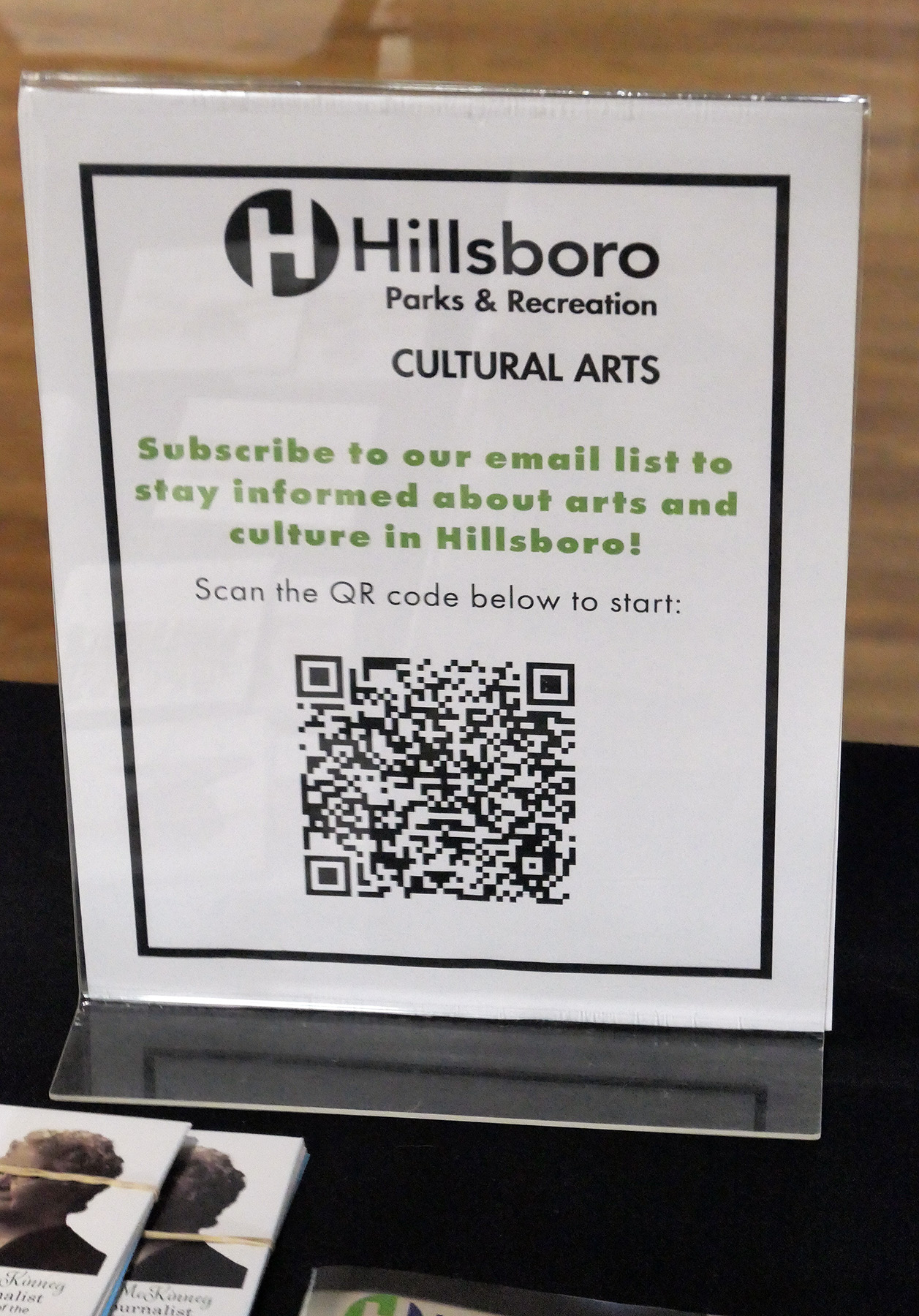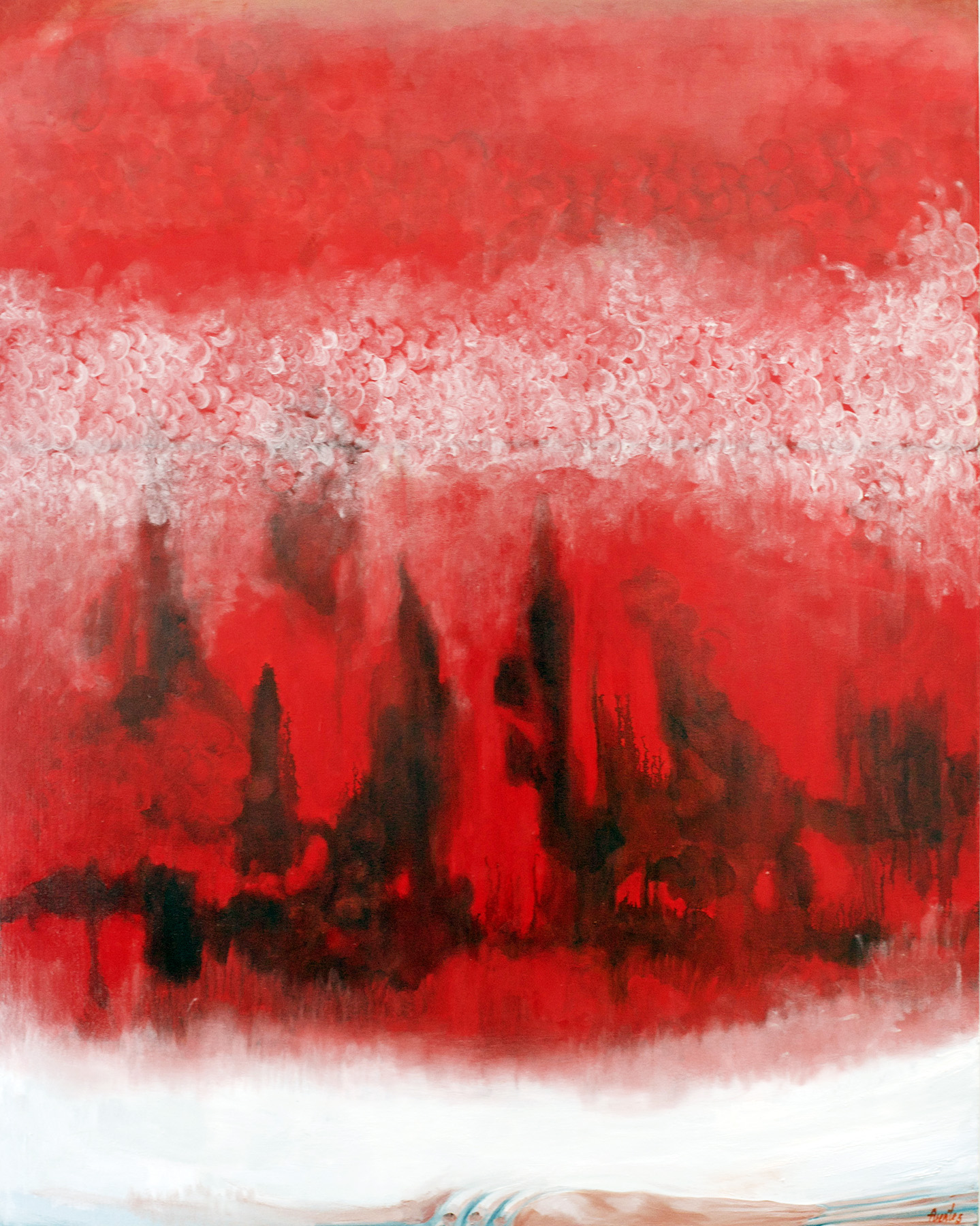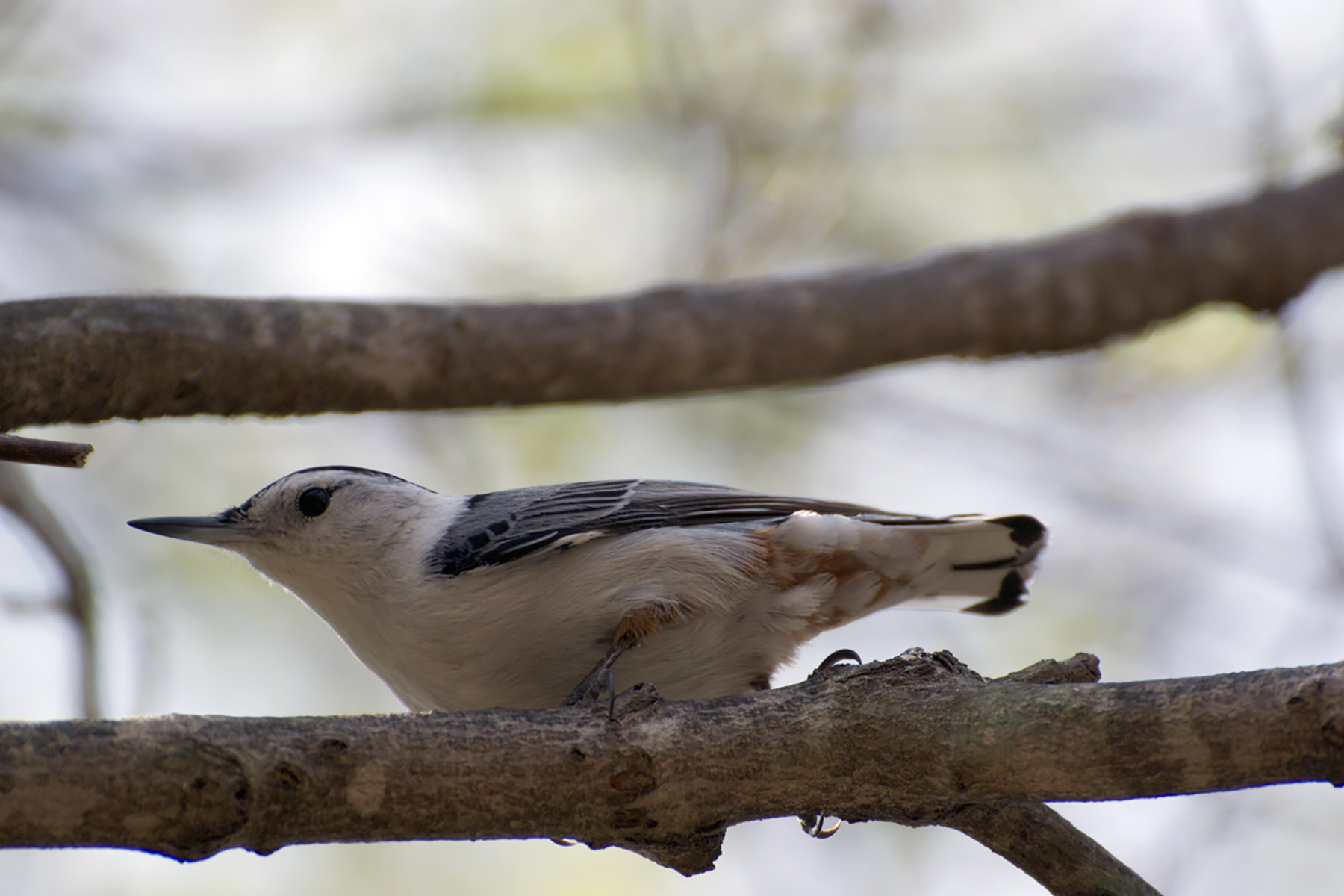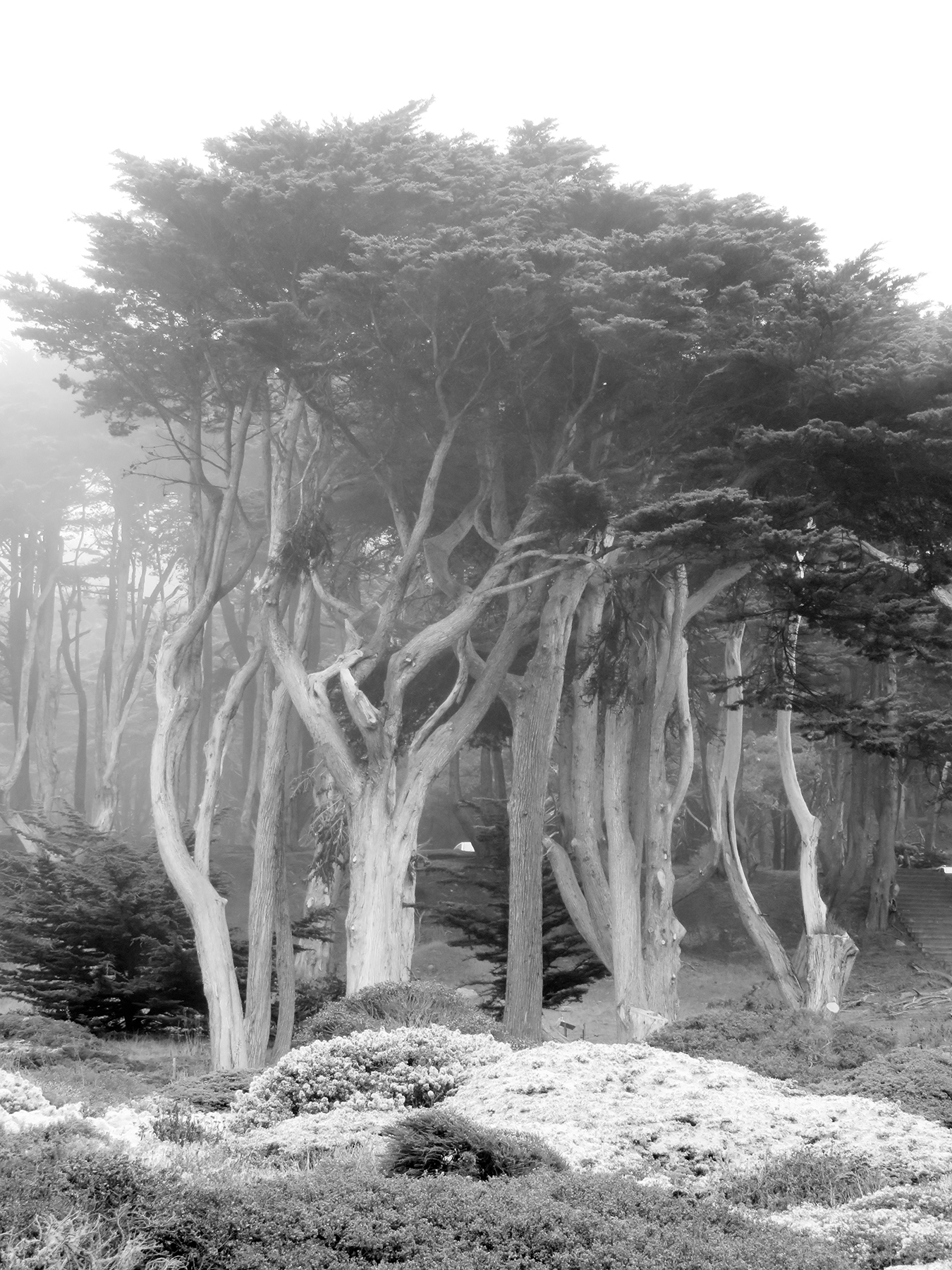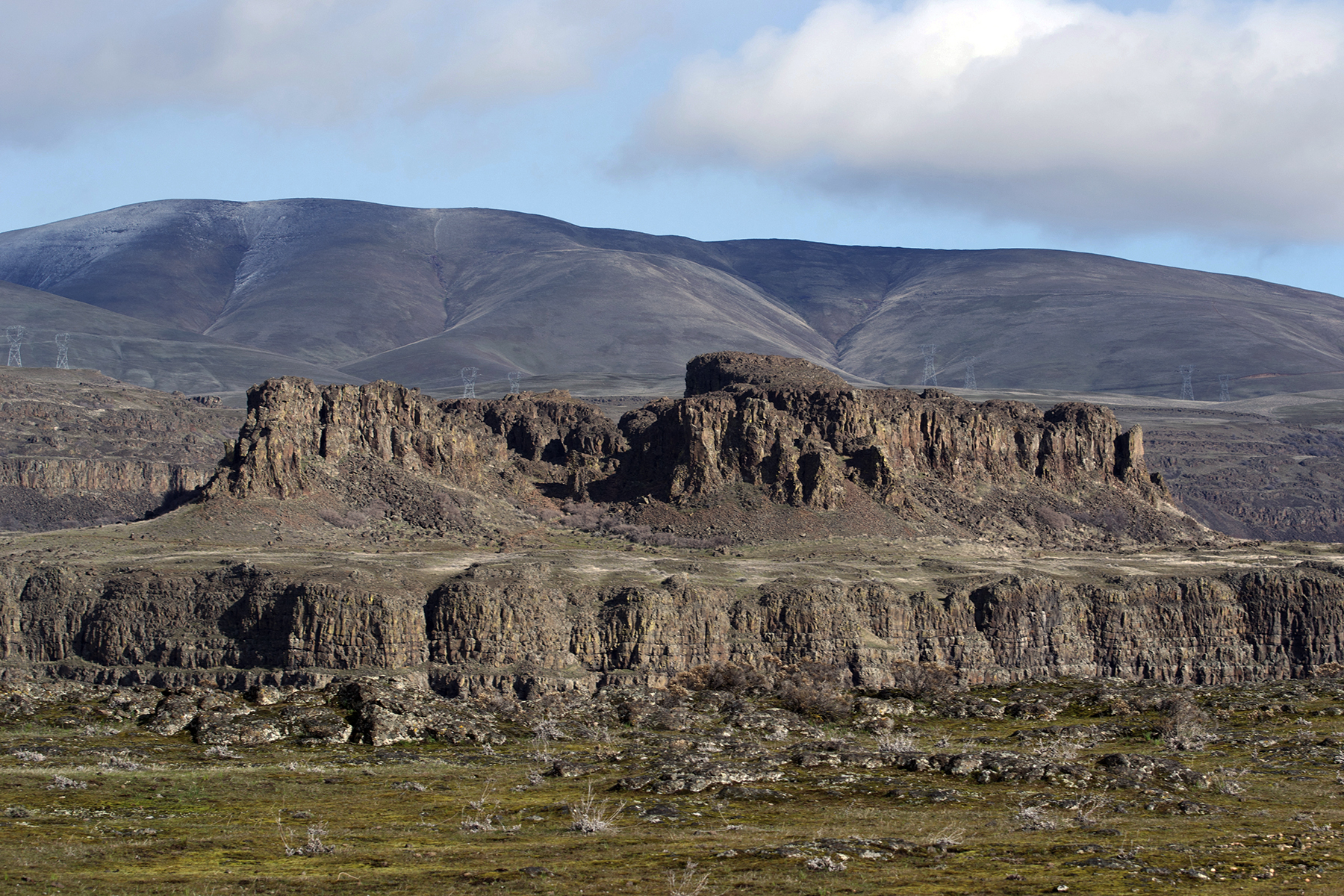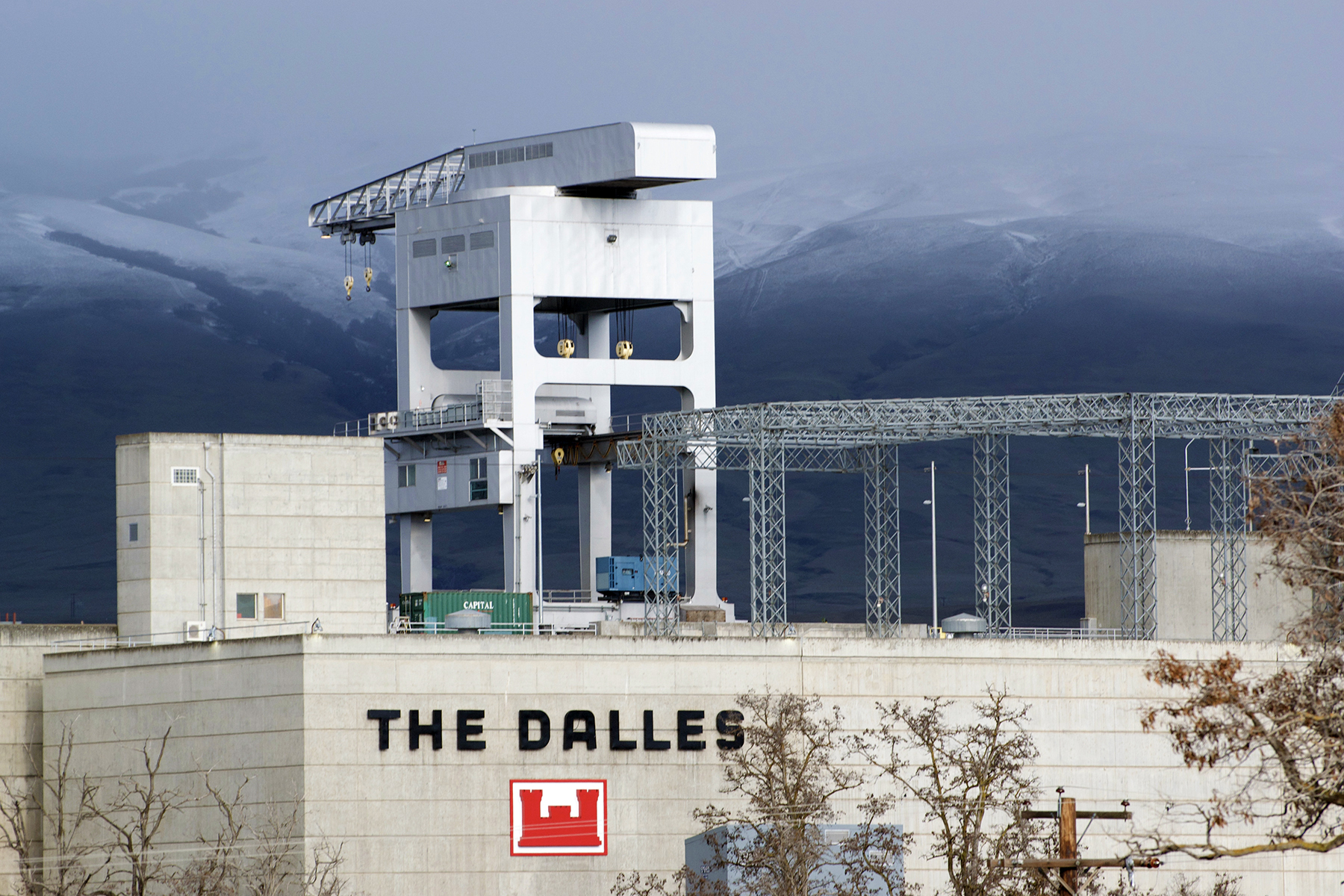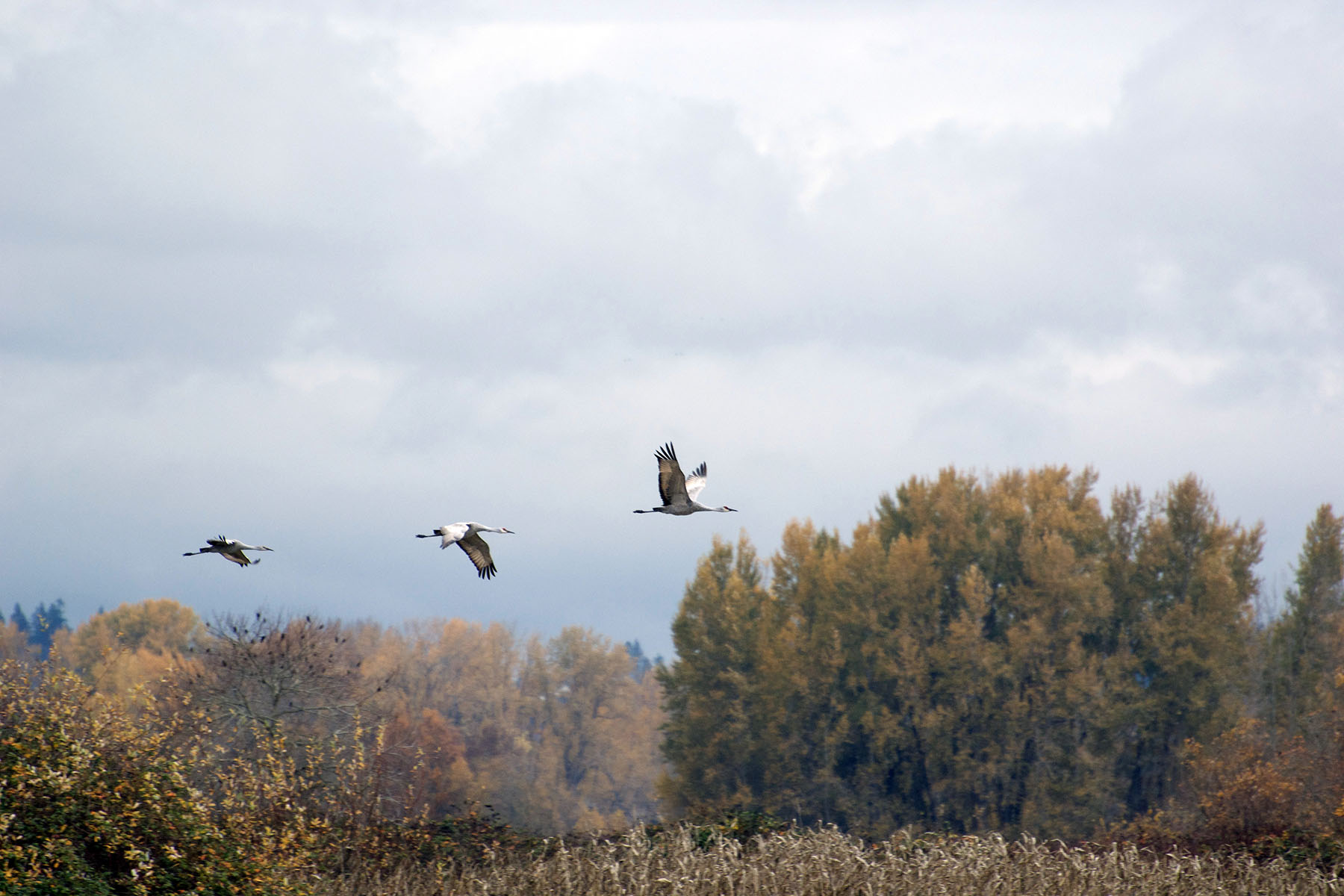The Oregon Humanities offers a terrific program called Dear Stranger. It is an annual letter-exchange project that connects Oregonians with each other, to share bits about their lives, their experiences and beliefs. You send a letter in and they randomly swap it for another one sent back to you. This year’s topic revolves around care: who cares about what, whom, where do you see care and where its absence. You can still join, the deadline is in June, I believe.
I wish I had gotten one of these letters, years ago, from someone living in Hillsboro. It would have helped me discover a vibrant community, devoted to the arts, caring for education and inclusivity. It’s sort of absurd that I have hiked and photographed in neighboring Jackson Bottom Wetlands Preserve for years on end, and never ever set foot into the town nearby, so easily reached by the MAX Blue line or by car with plenty of free parking.



Maybe you all knew all along. But I am not the only one who had no clue what’s on offer. When I visited the Glenn and Viola Walters Cultural Arts Center by invitation of the gallery specialist, Karen de Benedetti, I uttered something along the lines of “I didn’t know this existed!” This seems to be a sentiment frequently voiced by visitors right next to the belief that the building is a church. Which it was, and a beautiful one inside at that.
The Walters opened its doors in 2004 and has since served the community in many ways. Like the Parks and Recreation, Cultural Arts Division, all the Walters’ programs are part of the City of Hillsboro. What used to be a sanctuary is now a performance space with a stage, a fully equipped, concert-quality sound booth, and a program that includes something for every interest, from music to dance to the spoken word, diverse genres and cultural perspectives included. Of the 16 performances in each annual series, 6 are grant funded by the Performance Series Grant Program, providing opportunity for local groups to join the series. There are also other grant programs that support local artists and arts organizations. Cultural Arts Manager Michele McCall-Wallace is one of the forces at work to shape these programs at the Walters as well as the town’s cultural arts action plan that envisions future developments.



Entrance Hall and Performance Space at the Walters
The large space with its beautiful wood-work ceiling arches can also be rented for social occasions, from weddings, to quinceañeras, to celebratory luncheons, fundraisers and so on. Another, perhaps even more important way to serve the community, is the educational program offered by the center.
Melissa Moore is responsible for the education and outreach program which offers a wide variety of learning opportunities, from painting, to dance, theatre, music, drawing, and more. Among them is a fully equipped ceramics studio that welcomes students of all levels and provides access to its kilns for those enrolled in the classes.





From pre-school to seniors, with scholarships available, art education is prized, as is community involvement. The center, in partnership with the Washington County Office for Aging, Disability, and Veteran Services, offers a Memory Café, for example, which is designed for people with memory loss, early stage Alzheimer’s or a related dementia, and their families. Trained guides help participants experience art in a gentle environment.





Various local-non-profits engage with youths in programs at the Walters, in ways that contribute both knowledge and occasional gifts. The Hillsboro police department, for example, donated and fitted helmets at the end of a class that had kids create designs and then paint a skateboard. Skateboards reminded me of Hillsboro author’s Blake Nelson’s novel Paranoid Park, made into a movie by Gus van Sant. Remember? The film won, among others, the Cannes Film Festival’s special 60th anniversary prize. Nelson these days has an interesting travel blog, by the way.
***



Gallery space upstairs and downstairs
I had come to explore the current exhibition, Fire & Ice: Magic from the Earth, at the Walters’ art gallery which covers a set of spaces upstairs and downstairs, wide open and more intimate, respectively. Sensitively and tightly curated by de Benedetti, the exhibit alone is worth a trip out to Portland’s Western neighbor. The work is divided between ceramics and photography, the latter of frozen constellations captured by notable PNW fine art photographer Don Jacobson. Some of the icy landscapes might make it into the history annals, if the current warming climate trends continue (never mind this strange snowy April weather.)

Don Jacobson: Eagle Creek #1


Don Jacobson Ice Cathedral – Lower Multnomah Falls #2

Don Jacobson – Porcelain Basin #2
The ceramics were created by the folks at East Creek Art, a community art studio in Willamina, OR, that serves students, artists and educators, offering an introduction to and use of the West’s first Anagama wood burning kiln. Making these objects requires firing the wares in a collaborative process that takes several days of round-the-clock stoking, with flames and ashes creating the incredible patterning on the art.

Aubrey Sloan and Joe Robinson Flotsam

Cooper Jeppesen Tripod Vase




From left to right: Jenna Lee Wood-fired ZigZag Planter; Katy McFadden A Union; Chris Schwartz Wood fried Temmoku Vase; Elijah Pilkington Altered Stoneware Vase;

Jess “Squirrel” Komaromy Old Rosie.
What struck me most was not just the beauty of individual pieces, but the communal richness of the show: art ranged from works of absolute beginners to masters of the form, reinforcing rather than distracting from each other. Instructing new generations in an ancient Asian methodology.

Cooper Jeppesen East Creek Basket #1


Lew Allen Ashfall (Excerpt) Carrie Gibbs Oregon’s Elusive Bigfoot 2020 “Barely Made It!”

***
El que lee mucho y anda mucho, ve mucho y sabe mucho – Miguel de Cervantes
About a quarter of Hillsboro’s population (in total now well over 100.000 inhabitants, thus Oregons 5th largest city) could probably read Cervantes in the original, given their Hispanic background. I can only manage in translation: “One who reads and walks a lot, sees and knows a lot.” And walk we did during this visit, as well as drive, guided by yet another friendly person willing to devote some of his work day to showing me around.
Karl LeClair, a recent transplant from Idaho, is the new Public Art Supervisor in the Hillsboro Parks & Recreation universe. He guided me to three points of interest beyond the Walters, relevant to the appreciation of public art. (Further reading, in agreement with Cervantes, will involve this link to the Public Art Archive, a fount of information.)

We looked at the Hillsboro Civic Center and the adjacent Plaza first. The few remaining Sequoias across the street are reflected in the building, and a bold piece on its walls traces the needle branches.


Brian Borrello Sequoia Frond (2004)
The Plaza itself is a lively place when the weather warms up and Tuesday night markets resume. It is lined with basalt boulders that reveal their secrets with differing degrees of ease – 30 petroglyphs have been carved by Lillian Pitt (Confederated Tribes of Warm Springs/ Wasco/ Yakama) in an installation called Riverbed. It is a timely reminder that the city is located on Tualatin Kalapuya (Atfalati) land (I wrote about some of the Kalapuyan tribal history earlier here.)




Lillian Pitt Riverbed

Inside the Civic Center the visitor is greeted with colorful art on the elevator doors, glass art on the stair well, and a gallery space, the Shirley Huffman Auditorium Gallery, that contains permanent as well as changing exhibitions, currently showing work of some of the faculty that teaches at the Walters.

Hampton Rodriguez Diversity



Linda Haworth Father Time (2004) – John Groth Grand Staircase (2004) – Walters’ Faculty show Creative Brilliance – Skateboard included!
Another gallery space can be found at the recently opened Hidden Creek Community Center, a stream-lined, state-of-the-art facility for sports, education and meeting rooms. OPSIS Architecture collected tons of well deserved awards across the last two years for this first-of-its-kind mass timber building that blends into the adjacent forest. Situated close to a site designated for a large affordable housing development, the wood and glass structure is functional and inviting. Better still, with a large solar array on the roof of the community wing, natural ventilation, water conservation measures, and balanced daylighting, the Community Center is enrolled in the Energy Trust of Oregon’s Path to Net-Zero program and is expected to achieve net-zero energy use.








The public art above and below is by acclaimed Seattle public artist Norie Sato, a front entry steel wall with embedded tiny mirrors that reflect light and a free standing sculpture, E+MergenCe: Energy and Memory.

There are clearly numerous decentralized spaces for art in this city, and, as LeClair told me, conversations have often looked to find ways to coordinate and harmonize the isolated showings and offerings. As a City of Hillsboro program, the Cultural Arts Division of Parks & Recreation operates under the guidance of the Hillsboro Art and Culture Council (HACC) which is a citizen advisory committee appointed by the Mayor and City Council. The City’s Cultural Arts Action Plan captures the spirit of critical mass within Hillsboro advocating for the growth of cultural assets that benefits the local community and guides the work of Cultural Arts in serving the community.
Here are some of the upcoming programs at the Walters – just so you get a glimpse of the variety on offer.
———————————————————————————–
A Thousand Words June 7 – July 22, 2022
Joy Cartier, Mark Dunst, Jane Kearns, Stacey Stoudenmeyer, & Eliza Williams
On display Jun 7 – Jul 22
First Tuesday’s (June 7 & July 5)
Like the pages of a book, artists Joy Cartier, Mark Dunst, Jane Kearns, Stacey Stoudenmeyer and Eliza Williams explore the messy, imperfect space between thoughts and words. Layering paper, paint, and meaning over time, the artists merge simplicity and complexion, with captured emotions and expressions to tell abstracted stories.
Upcoming programs:
First Tuesday Art Walk, May 3rd 5:00 – 8:00 pm (Walters)
Lee Kelly dedication, May 17th 11:30 – 1:00 pm (Public Works building)
Rasika Dance Friday, May 20th 6:30 – 7:30 pm (Walters)
Barro Mestizo Friday, May 6th 7:30 pm (Walters)
Grupo Borikuas Friday, June 10th 7:30 pm (Walters)
Rejoice Friday, April 22nd 7:30 pm (Walters)
————————————————————————————-
***
And then there was the unexpected detour to the Hillsboro Public Works facility. Think transportation, sanitary sewer, and storm drainage, housed in a modern structure, designed by the same LRS architectural group that built the Civic Center. In front, an unwieldy, huge sculpture emerges through mist and rain, seemingly dropped from the sky like an alien crustacean. It stands there stubbornly, daring us to find a linkage, any association at all, to the building behind it, which I failed to come up with. Not that it mattered: Lee Kelly’s 30 year-old Untitled (Omark) piece breathes freely on its own. A powerful, abstract Cor-Ten steel structure stretches all of its 14x26x36 feet size into space, solidly anchored on stout columns, beckoning with openings under its arches.

Rumor has it that the sculpture by Kelly, who passed away last month, was in limbo at its old location and destined for the steelyard. Originally commissioned by Omark Industries, (Oregon Saw Chain Company in its beginnings) it stood at their business site along Macadam Ave, at the Willamette river. When property changed hands nobody knew what to do with the piece. Kelly’s representative, Elizabeth Leach Gallery, came to the rescue, as did Hillsboro’s Public Art Program, and this new location was secured. A dedication ceremony is slated for May 17th.

Lee Kelly Untitled (Omark) (1992)
***
Portland, OR April 2022
“Dear Stranger,
I hope this letter finds you well and able to explore some of what our state has to offer. I immigrated to the US in 1981, and have lived in PDX since 1986. I am interested in practically everything, except sports and cooking. (Yes, people like that do exist.)
Art has a special place in my world and I admit that I have not been particularly informed about what Oregon provides state-wide, or even in my own vicinity. My bad. One of the remedies was an exploration of Hillsboro, a small town west of Portland.
Since the topic of this year’s pen-pal exchange is “care,” let me report that I just discovered how much Hillsboro and its organizations, its art- and public service-related staff, all care about the arts. Work for the arts. Educate about the arts. Invest in the arts.
There seems to be an implicit understanding that private and public art does not just enrich physical environments, or boost local economies. Art can raise community pride, promote civic discourse, connect neighbors and their communities in all their diversity and/or shared history. I am grateful that a single proactive gallery curator got me out to a place where all of this seems to be happening! Let me do you the favor in turn – head to Hillsboro!
Sincerely,
Another Stranger.”
——————————————————————————
The Glenn and Viola Walters Cultural Arts Center
150 E. Main Street, Hillsboro, Oregon 97123
Hours of Operation Monday through Thursday: 9 am to 9 pm Friday: 9 am to 5 pm Saturday & Sunday: Closed except for special events & private rentals
Exhibit Reception for Fire& Ice: Tuesday, May 3, 5 to 8 pm
